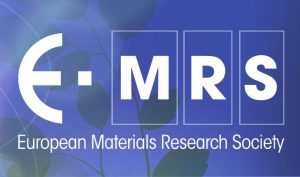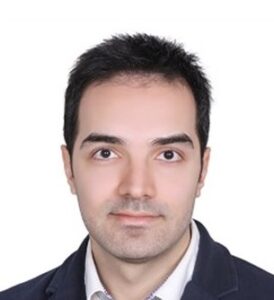הפורום הישראלי לעיבוד חומרים באמצעות לייזר בלשכת המהנדסים והאדריכלים בישראל (AEAI) בשיתוף
European Materials Research Society (EMRS) - מזמין אתכם להשתתף בוובינר של פורום עיבוד חומרים בלייזר
About
Association of Engineers and Architects Israel (AEAI)
The Israeli Forum of Laser Materials Processing at the Architects and Engineers Association Israel (AEAI) kindly invites you to participate in a webinar featuring two lectures on laser materials processing.
In the first lecture Mr. Stephan Koß (MSc) , Technical Manager in Laserline, Mülheim-Kärlich , Germany, will present the technology of laser cladding and discuss the potential for coatings and for additive manufacturing of components.
In the second lecture, Dr. Farzad Vakili Farahani, Application Manager in Coherent Switzerland, will describe the precision welding with Fiber laser by means of beam steering technology. He will introduce an accurate tool for precision welding to cope dissimilar materials welding.
The target audience includes scientists, engineers, technical managers/directors, and influencers from advanced manufacturing companies and academia. Students, apprentices, as well as business and procurement managers who are involved in decisions related to adopting advanced manufacturing processes or developing new and improved products, are also encouraged to attend.
This webinar is endorsed by the European Materials Research Society (EMRS).
Program
Jerusalem time – 15:00
Webinar Program:
Speaker: Mr. Stephan Koß (MSc), technical Manager in Laserline, Mülheim-Kärlich , Germany
15:00- 15:40
Talk Topic: Laser Cladding for Additive Manufacturing and Coatings
Abstract: Surfaces and their coatings play a crucial role along most process chains, for example with regard to corrosion, wear or sliding properties. Laser cladding in particular is becoming increasingly important for surface functionalization thanks to the metallurgical bonded coating. Laser cladding stands out as a coating method in this context. Laser cladding can produce dense and metallurgical bonded coatings on external and internal surfaces. Additionally, through precise control of energy input, a variety of materials, such as Ni-based alloys, aluminum, or material mixtures with TiC, can be used for coating. Furthermore, Laser cladding can also be used for Additive Manufacturing to produce complex geometries through localized material deposition. Within the scope of the presentation, the potential of laser cladding will be explained and demonstrated for various applications.
15:40- 16:00 Q&A
Speaker: Dr. Farzad Vakili Farahani , application manager in Coherent Switzerland
16:00-16:40
Talk topic: precision welding with Fiber laser beam welding (LBW) by means of beam steering technology to cope dissimilar metal welding application.
Abstract: This lecture is describing precision welding with Fiber Laser Beam welding (LBW) by means of beam steering technology to cope dissimilar metal welding application. Laser Beam Steering in principle is a technique to bring about the possibility to control Laser beam energy input to the material. However, the proper tool (processing head and controller) which can achieve the performance as theoretically estimated (e.g. Beam oscillation path as user defines/designs) is very challenging. This means the common scanner and wobbling unit in the market are not able to achieve the Oscillation size and speed as the user defines (mismatches of reality to the estimation). This in turn resulted in deviation from design condition to what is on the hardware achievable.
SmartWeld+ is introduced as an accurate tool (Controller+Processing head) which has been recently developed to cope this issue and produce the application results (beam oscillation path) as the user defines. There is no more mismatches of the design path to the actual application result. This opens new door and bring about new potential for best process optimization as laser beam is directed to where it is designed.
Meanwhile, some dissimilar metal welding applications are presented to prove how the precise control of oscillation path (SmartWeld+) could lead to achieve the desired application quality.
16:40-17:00 Q&A
About the speakers:
Stephan Koß (MSc)
Stephan Koß has been working at Laserline GmbH in technical sales within the General Manufacturing team since October 2024. His focus is on surface functionalization, and he is also responsible for topics related to hydrogen, Sliding Contacts and applications Cladding & AM using blue Laser. Prior to this, in 2018, he completed his Master’s degree in Aerospace Engineering at RWTH Aachen University. Subsequently, from 2018 to September 2024, he worked as PhD at the Chair of Digital Additive Production at RWTH Aachen University, specializing in laser cladding and hybrid manufacturing.
Dr. Farzad Vakili Farahani
Farzad Vakili Farahani is currently application manager in Coherent Switzerland, where he focused on extending the application of fiber Laser beam welding to join dissimilar metal, high reflective metals and precision welding. He is also the project manager for development of the SmartWeld+ product and technology (processing head optics and controller for high precision Beam Steering technology).
He is working about 10 years for Coherent Inc. and before joining to Coherent he was working at Swiss Federal Laboratories for Materials Science and Technology (Empa) as postdoctoral on the fiber laser welding, keyhole welding, Beam steering technology and laser material process monitoring.
He received his Ph.D. diploma from Energy department (Mechanical eng.) at Swiss Federal Institute of Technology in Lausanne with a research on Two-phase flow (flow boiling and condensation) heat transfer and pressure drop in compact heat exchangers.
Audience
Mechanical engineers, manufacturing engineers, welding engineers
Registration
השתתפות בוובינר ללא עלות אך מותנת ברישום מראש
הנרשמים יקבלו מייל עם קישור להשתתפות מהזום. הקישור ישלח מכתובת:” omri AEAI Webinar”
חשוב לוודא כי הרישום שלך יבוצע מכתובת הדוא”ל עליו מוגדר חשבון הזום שלך
יש למלא פרטים באנגלית
*ההרצאות בוובינר הינם באנגלית


